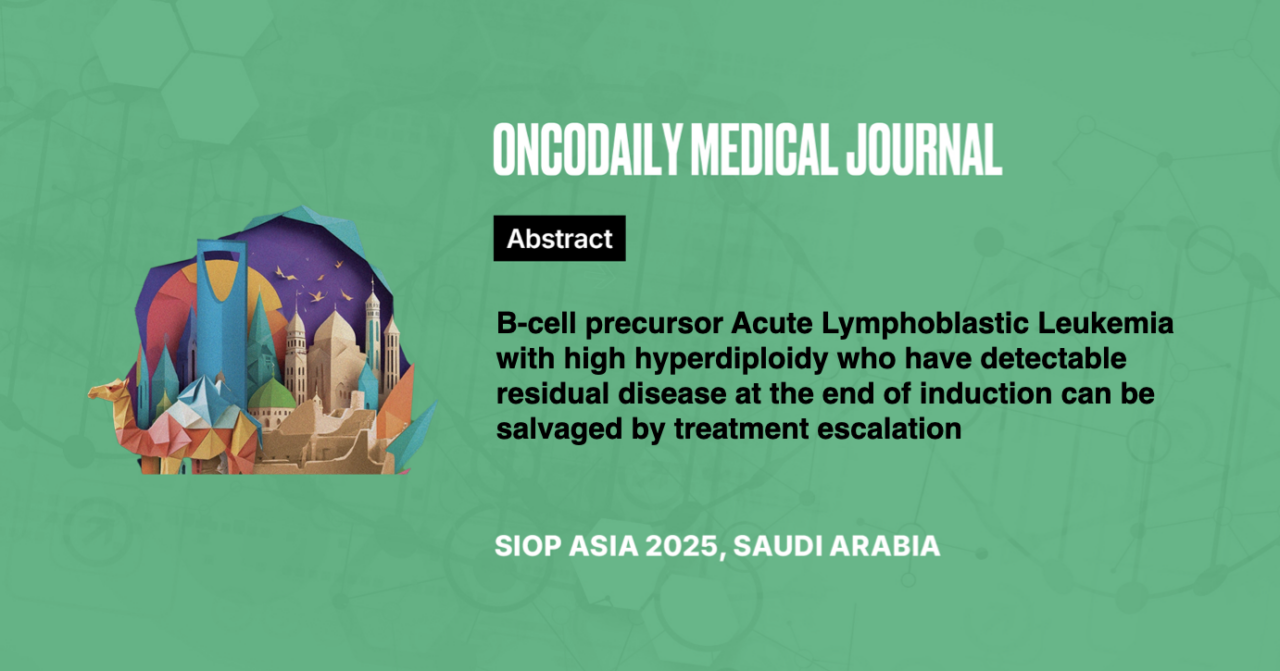B-cell precursor Acute Lymphoblastic Leukemia with high hyperdiploidy who have detectable residual disease at the end of induction can be salvaged by treatment escalation
Abstract
Introduction: High hyperdiploidy is the most common cytogenetic abnormality in B-cell acute lymphoblastic leukemia (B-ALL) with excellent outcomes. This study analyzed outcomes of high hyperdiploid B-ALL in 205 children treated with the ICiCLE 2014 protocol at a tertiary care center in India. Patients were enrolled between 2019-2021 and followed until December 2024.
Methodology: Prospectively collected data was analysed for 205 patients identified as high hyperdiploid B-cell ALL based on WHO criteria. Children with high hyperdiploidy were risk stratified upfront based on NCI risk criteria and final risk was assigned based on end of induction minimal residual disease(MRD). Descriptive Methodology: were used to analyze data, and statistical analysis were done using SPSS version 21.
Results: This study included 205 children with high hyperdiploid B-ALL. The median age was 4.9 years, with a male-to-female ratio of 1.72. The median initial white blood cell count was 6.65 x 10^9/L. Relapse occurred in 36 patients (17.5%), including 13 with combined relapses while 21 were isolated relapses (13 medullary, 2 CNS, 6 testicular and 1 with lymph node enlargement). The 3-year overall survival (OS) was 86.3 ± 2.9%, and the 3-year event-free survival (EFS) was 74.1 ± 3.7%. A quarter of the patients (25.33%) had detectable minimal residual disease (MRD) at the end of induction therapy. Importantly, 18 patients(8.7%) had treatment-related mortality(TRM) mostly due to infections.
Conclusion: Outcomes of high hyperdiploid B-ALL treated with the ICiCLE 2014 protocol was lower than contemporary protocols 3-year EFS. TRM potentially contributed to poor outcomes. End-of-induction MRD did not significantly impact outcomes due to escalation of therapy and inclusion of high dose methotrexate in those with positive MRD.





